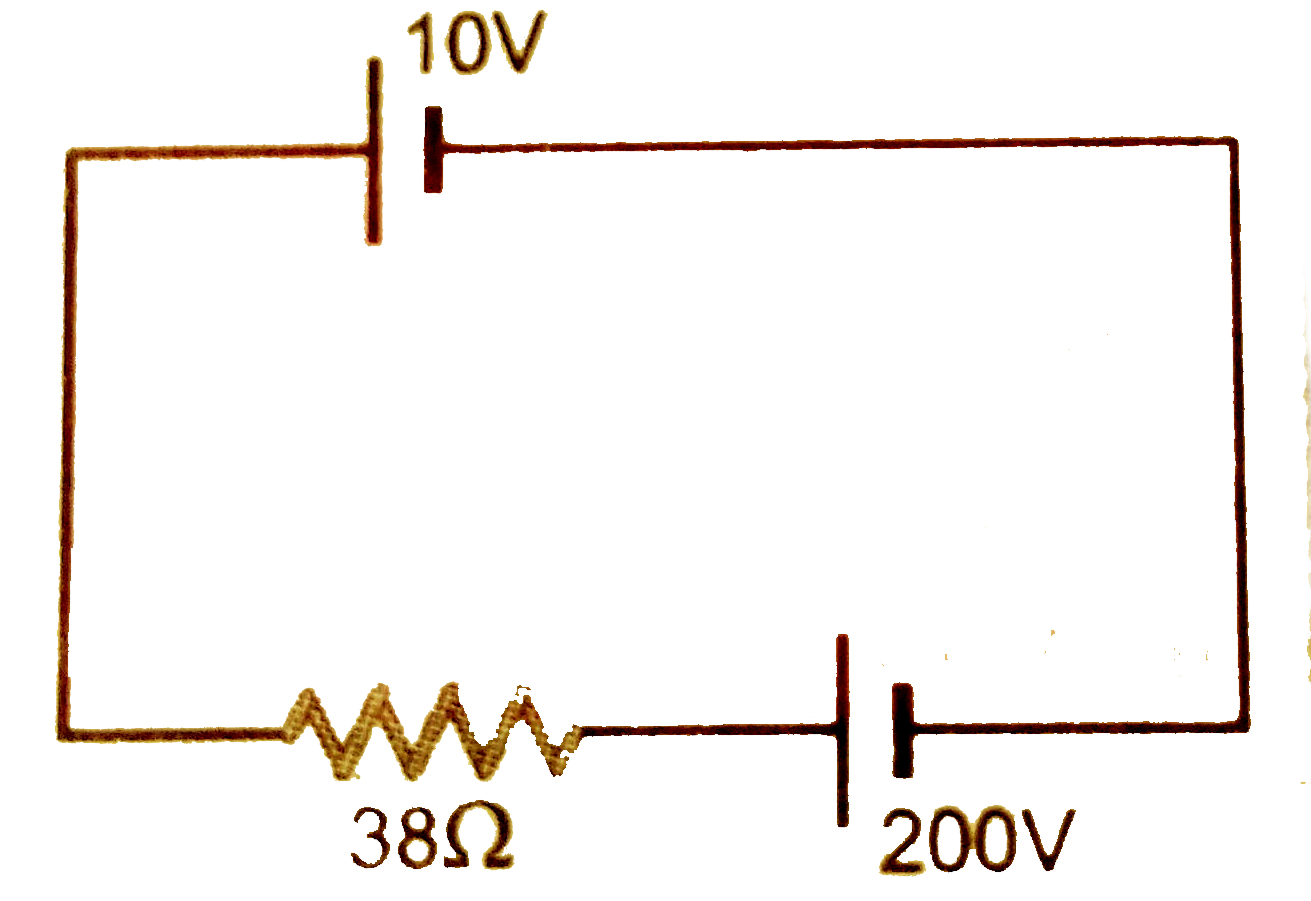A 10V Zener diode along with a seriers resistance R is connected across a 40V supply. Calculate the minimum value of the resistance, ar required, if the maximum Zener current is 50mA.
To solve the problem, we will follow these steps:
Step 1: Understand the Circuit
We have a Zener diode connected in parallel with a load resistance (RL) and a series resistance (R). The total supply voltage (V_supply) is 40V, the Zener voltage (V_Z) is 10V, and the maximum Zener current (I_Z(max)) is 50mA.
Step 2: Apply Kirchhoff’s Voltage Law
According to Kirchhoff's Voltage Law, the voltage across the series resistance (R) plus the Zener voltage (V_Z) should equal the supply voltage (V_supply). Therefore, we can write the equation:
Vsupply=I⋅R+VZ
Step 3: Rearrange the Equation
We can rearrange the equation to find the resistance (R):
R=Vsupply−VZI
Step 4: Substitute the Known Values
We know:
- Vsupply=40V
- VZ=10V
- I=IZ(max)=50mA=0.050A
Substituting these values into the equation gives:
R=40V−10V0.050A
Step 5: Calculate the Resistance
Now, we can perform the calculation:
R=30V0.050A=600Ω
Conclusion
The minimum value of the resistance R required is 600 ohms.
---
We have a Zener diode connected in parallel with a load resistance (RL) and a series resistance (R). The total supply voltage (V_supply) is 40V, the Zener voltage (V_Z) is 10V, and the maximum Zener current (I_Z(max)) is 50mA.
According to Kirchhoff's Voltage Law, the voltage across the series resistance (R) plus the Zener voltage (V_Z) should equal the supply voltage (V_supply). Therefore, we can write the equation:
Vsupply=I⋅R+VZ
We can rearrange the equation to find the resistance (R):
R=Vsupply−VZI
We know:
- Vsupply=40V
- VZ=10V
- I=IZ(max)=50mA=0.050A
R=40V−10V0.050A
Now, we can perform the calculation:
R=30V0.050A=600Ω
The minimum value of the resistance R required is 600 ohms.
Topper's Solved these Questions
- ELECTRONIC DEVICESBook:PRADEEPChapter:ELECTRONIC DEVICESExercise:SAMPLE PROBLEM
Explore 2 Videos
- ELECTRONIC DEVICESBook:PRADEEPChapter:ELECTRONIC DEVICESExercise:CONCEPTUAL PROBLEMS
Explore 1 Video
- ELECTROMAGNETIC WAVESBook:PRADEEPChapter:ELECTROMAGNETIC WAVESExercise:II Focus multiple choice question
Explore 5 Videos
- ELECTROSTATICSBook:PRADEEPChapter:ELECTROSTATICSExercise:ASSERTION-REASON TYPE QUESTIONS
Explore 2 Videos
Similar Questions
A 6V zener diode along with a series resistance R is connected accrose a 12V supply. Calculate the minimum value of the resistance R required, if the maximum zener current is 30mA.
View SolutionIn a given circuit diagram, a 5 V zener diode along with a series resistance is connected across a 50 V power supply. The minimum value of the resistance required, if the maximum zener current is 90 mA will be ___ Ω .

View Solution
Knowledge Check
Three equal resistances, each of RΩ are connected as shown in figure. A battery of emf 2 V and internal resistance 0.1Ω is connected across the circuit. Calculate the value of R for which the heat generated in the circuit is maximum?
 A0.2ΩB0.3ΩC0.4ΩDnone of these
A0.2ΩB0.3ΩC0.4ΩDnone of theseA cell of internal resistance r connected across an external resistance R can supply maximum current when
AR=rBR>rCR=r2DR=0
A 10V of zener diode is connected in series to a resistance across a power supply of 50 V calculate the minimum value of resistance required such that the zener current is 25 mA
View SolutionA 50 mH inductor is connected across a power supply of emf 130 sin (314 t) volts. Calculate the resistance of the inductor if maximum current in the circuit is 8 A.
View SolutionA 10μF capacitor in series with a 40Ω resistance is connected to a 110 V, 60Hz supply. (a) What is the maximum current in the circuit ? (b) What is the time lag between current maximum and voltage maximum ?
View SolutionThree equal resistace, each of R ohm, are connectedd as shown in the figure. A battery of 2V and of internal resistance 0.1 ohm is connected across the circuit. The value of R for which the heat generated in the circuit maximum will be

View SolutionA 10 V battery of negligible internal resistance is connected across a 200 V battery and a resistance of 38 Ω as shown in the Fig. Find the value of the current in circuit.

View SolutionA 10 V battery of negilgible internal resistance is connected across a 200V battery and a resistance of 38Oemga as shown in figure.
 . Find the value of current in the circuit.
. Find the value of current in the circuit.
View Solution

